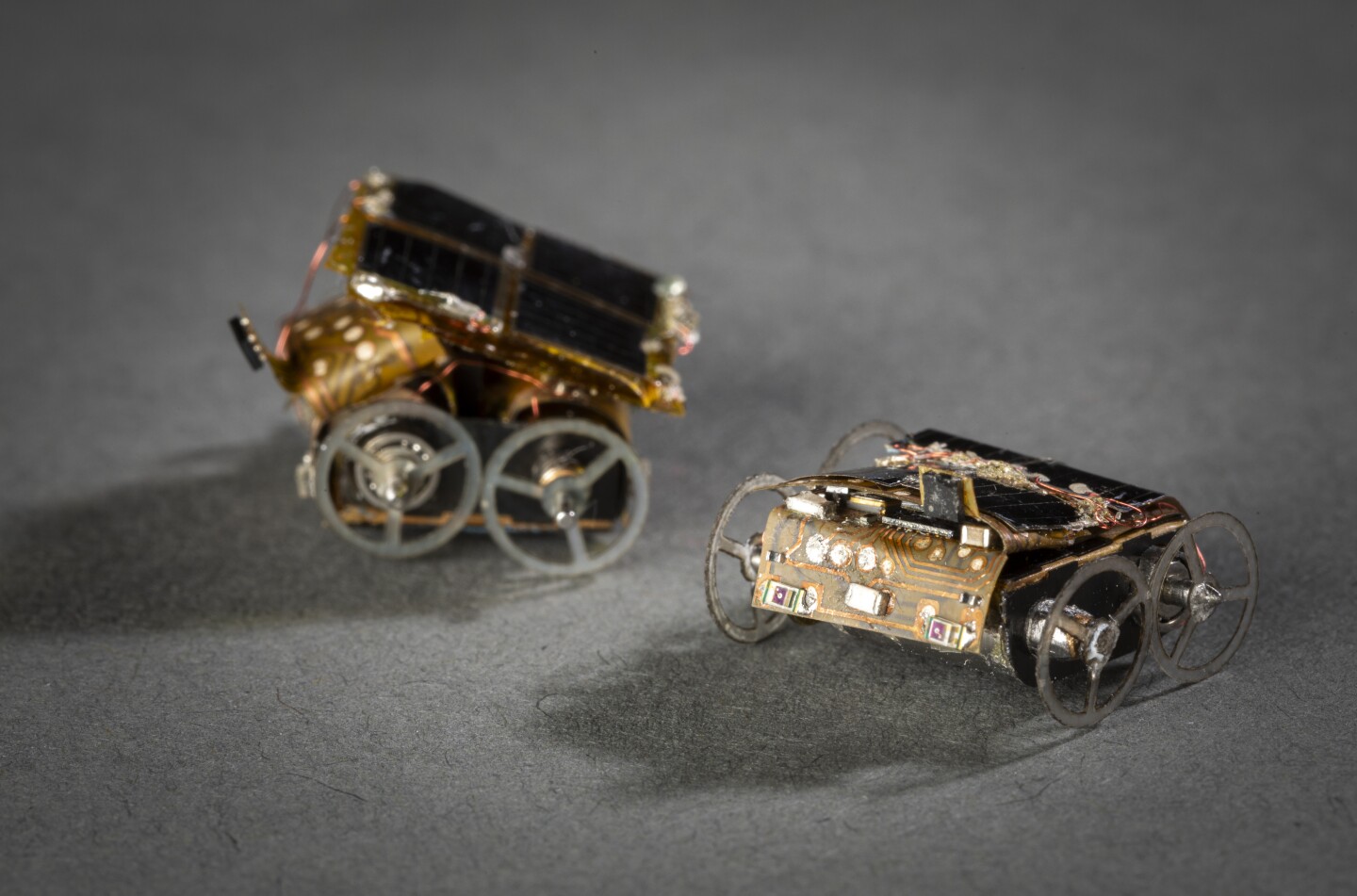There are numerous situations in which a robot doesn’t need to move quickly, but it does need to cover long distances without having to recharge its batteries. The minuscule energy-harvesting MilliMobile robot was designed for just such scenarios.
Created by a team of scientists at the University of Washington, the four-wheeled prototype device measures just 10 mm (0.4 in) per side, and tips the scales at about 1 gram (0.04 oz).
It contains no batteries, but does incorporate two motors, a carbon fiber chassis, a foldable printed circuit board, a light sensor, solar cells and an antenna. What’s more, it can carry up to three times its own weight in the form of cargo such as cameras and environmental sensors.
As the MilliMobile moves along flat surfaces like floors, concrete, asphalt or packed dirt, it scavenges energy from ambient light and radio waves. Even on a cloudy day, it can reportedly cover a distance of approximately 30 feet (9 m) in one hour. It does so by moving in increments, instead of trying to store up enough power to make the whole trip in one continuous go.
“We took inspiration from ‘intermittent computing,’ which breaks complex programs into small steps, so a device with very limited power can work incrementally, as energy is available,” said doctoral student Kyle Johnson, co-lead author of the study. “With MilliMobile, we applied this concept to motion.”

Mark Stone/University of Washington
Utilizing its light sensor, the robot can autonomously steer itself towards a specified light source. It can also transmit sensor data via Bluetooth – in tests performed so far, it has successfully relayed data from onboard light, temperature and humidity sensors.
Looking further down the road, it’s possible that multiple MilliMobiles within collaborative swarms could wirelessly share data with one another. Potential applications for the technology include monitoring soil moisture at farms, performing inspections of machinery in factories, or seeking out the source of gas leaks.
The scientists will be presenting a paper on their research at the ACM MobiCom 2023 conference in Madrid. You can see the MilliMobile in action, in the following video.
MilliMobile: An Autonomous Battery-free Wireless Microrobot
Source: University of Washington
appId : ‘38456013908’,
xfbml : true,
version : ‘v3.3’
});
};
(function(d, s, id){
var js, fjs = d.getElementsByTagName(s)[0];
if (d.getElementById(id)) {return;}
js = d.createElement(s); js.id = id;
js.src = “https://connect.facebook.net/en_US/sdk.js”;
fjs.parentNode.insertBefore(js, fjs);
}(document, ‘script’, ‘facebook-jssdk’));
